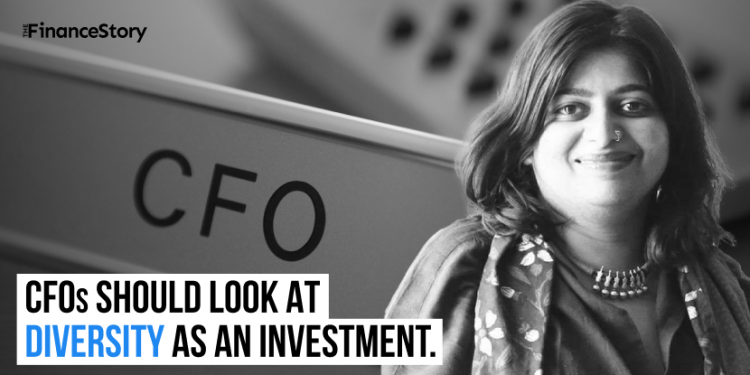Madhumitha Venkataraman, the founder of Diversity Dialogues, has been at the forefront of diversity and inclusion in organizations.
She is a thought leader in the space of inclusion and has created resources for workplaces to implement LGBTQIA+ inclusion, psychological safety, mental health, parenting, and persons with disability, and raised awareness about domestic violence, microaggressions, and more.
Madhumitha in the past has worked with Hindustan Coca-Cola Beverages and SnapDeal.
Having worked with over 100+ companies in their diversity and inclusion journey as an advisor, she is clear that CFOs play a key role in diversity and inclusion.
Here are some tips for leaders to look at diversity beyond HR Policies:
Diversity and inclusion go beyond an HR Policy
One of the biggest myths that I want to bust about diversity and inclusion is that it is only an HR job.
There is an angle of the diversity policy process system, where something can be owned by HR, just like how the budget can be owned by the finance department. But certainly, building diversity and inclusion just does not have to exist in HR alone.
I believe CFOs play a major role in this change.
- A finance person must look at diversity as a critical investment and not a cost.
For example, while building a creche facility, there is so much that has to be done properly.
There are a lot of questions that one needs to ask. A creche facility needs to help not only women but also men with children.
Imagine how a simple addition of a good creche facility can improve the productivity of the employees.
I would be very open to sharing this, but in many organizations, one has to fight through for budgets in terms of having creche facilities or any other interventions around diversity, equity, and inclusion
I would also say organizations have to be supportive of equal parenting and that is where inclusion truly happens.
Isn’t it fair?
I don’t like to make it a man’s job to provide for the family and a woman’s job to only take care of the child. It has to be balanced.
- When facilities are built they need to have policies for men and women and be inclusive for both parents.
These are changes that have to be thought through by leaders of an organization in order to make an impact and bring inclusivity.
Allocating budgets improves productivity
Paternity leave is a very common challenge because if you look at our representation of men and women in the workplace, it is skewed. We have roughly 25 percent of women and about 75 percent of men currently. Paternity leave is going to hit the budgets a lot more.
Leaders have to think about structuring diversity, not around cost, but around impact.
Inclusivity needs to be made for all genders equally and there should be fair treatment.
You are not going to break your business by being fair, or adding a creche facility and creating paternity leave will not impact your business. It makes an organization stronger and motivates employees to work better.
When I engage with a company I usually ask them – do you have a budget? For me, a budget demonstrates the intent to do things.
I am not saying you need to have an extraordinary budget, just start somewhere and make diversity a part of your organization.
A visually impaired person may need a braille laptop, or a person, who is deaf may need captioning services. Leaders must think through how diversity is implemented rather than stating that they have diversity in their hiring.
There are so many instances where having a gender-neutral washroom, on the premise, goes a long way in communicating that the organization is making efforts to be open and inclusive for all.
I really urge all CFOs, and finance people to look at it as an investment and put their money out there for impact.














